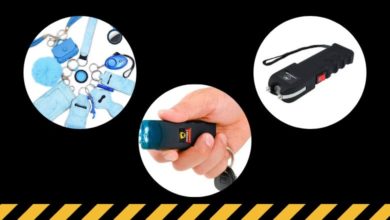How Often Do Tasers Fail?
KEY TAKEAWAYS
A total of nearly 400,000 American police officers have a taser on their duty belt. Supporters and manufacturers contend that “less lethal” devices can assist officers in avoiding fatal encounters with criminals in the fight against police brutality.
The largest taser manufacturer, Axon Enterprise Inc., has long promoted the electroshock device as an incredibly effective tool for police in avoiding the use of firearms in most situations. However, a yearlong examination by APM Reports reveals that tasers are often less effective than the manufacturer claims.
Tasers are excellent weapons for self-defense; they can also save lives when used to subdue suspects. But when they don’t work as intended, the outcome can be deadly. If you are interested in discovering the number of times a taser usually fails, continue reading this article below.
What Is A Taser?
The Taser, the most well-known brand of taser devices, is produced by Axon Enterprise, previously Taser International. In the same way that “Band-Aid” is used as a general term to describe adhesive bandages, the name “Taser” has come to be associated with the electroshock weapon.
Tasers, which have been used by police officers for decades now, can momentarily incapacitate an assailant by jolting the target with 50,000 volts of electricity. They can also cause pain, dehydration, disorientation, and temporary paralysis when hit. The discharge of a single cartridge, also known as a cycle, can last up to five seconds.
Basically, when an officer pulls the trigger on the taser, the assailant’s muscle freezes up, and the target just falls down.
How Do They Work
Modern taser devices are equipped with two modes of discharge. Users can choose to use it from a range of 15 to 20 feet away to keep a safe distance from the assailant. However, they can also use it in “drive mode”, in which the electric charge is delivered directly into a person’s body at close range.
When a taser is fired from a distance, which is what users usually do, probes or darts connected to the device by insulated wires are discharged at a target. In those cases, tasers have an effective range of around 15 feet (4.5 meters).
The darts can puncture clothing and provide an electric shock that briefly paralyzes the target by interfering with their nervous system after making direct physical contact with the target.
Why Were They Developed?
Tasers were advertised as a “panacea,” one that would assist law enforcement authorities in dealing with noncompliant individuals. These devices are considered to be “less than lethal” tools designed to widen the midrange options of police officers in subduing an assailant.
With the help of electronic control weapons like tasers, the use of deadly force of the police were reduced. This have surely saved many lives. Axon Enterprise even boasts that 100,000 deaths or serious injuries were prevented in 2012 due to the use of tasers.
Nowadays, some states have allowed civilians to carry and use electroshock weapons such as stun guns and tasers. However, this has come under scrutiny due to the recent events regarding taser misuse among the police departments of various states.
Are They Deadly?
In the United States, at least 500 people have passed away since 2001 as a result of being shocked with a Taser during an arrest or while in jail, according to data gathered by Amnesty International. California with 92 deaths, followed by Florida with 65 deaths, and Texas with 37 deaths have the most Taser-related fatalities according to Amnesty International.
With seven fatalities, the Oklahoma City Police Department led all other law enforcement agencies, followed by the Las Vegas Metropolitan Police, the Harris County Sheriff’s Office of Texas, Phoenix, Arizona, and San Jose, California, each with six deaths.
Most of the deaths following the use of tasers can be traced to unneccesary force being used. However, some critics also point out that loose national guidelines on police use of Tasers and similar electroshock weapons, also known as Conducted Energy Devices (CEDs), played a factor in the fatalities.
Are They Effective?
Over the years, Axon Enterprise had made some overwhelming claims regarding the effectivity of their devices. According to their reports, tasers have an instant incapacitation rate of 86%, which led to a field success rate of 94% to 97%. However, based on every police department’s record of taser effectivity, none of them had the kind of success rates Axon had claimed. In fact, the highest effectiveness rate of taser use was 79.5% by El Paso Police Department.
In the field, studies have shown that Tasers fail to bring down their targets as much as 40% of the time. Police departments have claimed that electronic control weapons were not effective in the way they were intended. When tasers fail to subdue an assailant, situations escalate quickly which often lead to the use of deadly force. This essentially defeats the purpose of employing a “less than lethal” weapon.
Are you still interested in purchasing your own taser device? Check out how much Tasers cost in this article by Security Forward.





